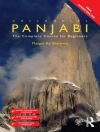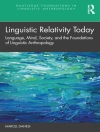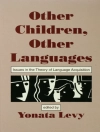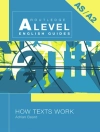This book focuses on linguistic landscapes in present-day urban settings. In a wide-ranging collection of studies of major world cities, the authors investigate both the forces that shape linguistic landscape and the impact of the linguistic landscape on the wider social and cultural reality. Not only does the book offer a wealth of case studies and comparisons to complement existing publications on linguistic landscape, but the editors aim to investigate the nature of a field of study which is characterised by its interest in ‘ordered disorder’. The editors aspire to delve into linguistic landscape beyond its appearance as a jungle of jumbled and irregular items by focusing on the variations in linguistic landscape configurations and recognising that it is but one more field of the shaping of social reality under diverse, uncoordinated and possibly incongruent structuration principles.
Inhoudsopgave
Introduction by Eliezer Ben-Rafael, Elana Shohamy and Monica Barni
Part I: LL Multilingualisms
1. Monica Barni and Carla Bagna: Linguistic Landscapes and Language Vitality
2. Jeffrey L. Kallen and Esther Ní Dhonnacha: Language and Inter-language in Urban Irish and Japanese Linguistic Landscapes
3. Yael Guilat: “The Holy Ark in the Street”: Sacred and Secular Painting of Utility Boxes in the Public Domain in a Small Israeli Town
Part II: Top-down, Power and Reactions
4. Shoshi Waksman and Elana Shohamy: Decorating the City of Tel Aviv-Jaffa for its Centennial: Complementary Narratives via Linguistic Landscape
5. Theo du Plessis: Bloemfontein/Mangaung, ‘City on the Move’: Language Management and Transformation of a Non-representative Linguistic Landscape
6. Jia Jackie Lou: Chinese on the Side: The Marginalization of Chinese on the Linguistic Landscape of Chinatown in Washington, DC
7. Heiko Marten: LL under Strict State Language Policy: Reversing the Soviet Legacy in a Regional Centre in Latvia
8. Aneta Pavlenko: Linguistic Landscape of Kyiv , Ukraine: A Diachronic Study
Part III: Benefits of LL
9. Adam Jaworski and Simone Yeung: Life in the Garden of Eden: Naming in Hong Kong
10. Jennifer Leeman and Gabriella Modan: Selling the City: Language, Ethnicity and Commodified Space
11. David Malinowski: Showing Seeing in the Korean Linguistic Cityscape
Part IV: Perceptions of Passers-by
12. Jokin Aiestaran, Jasone Cenoz and Durk Gorter: Multilingual Cityscapes: Perceptions and Preferences of the Inhabitants of the City of Donostia-San Sebastián
13. Nira Trumper-Hecht: LL in Mixed Cities in Israel from the Perspective of ‘Walkers’: The Case of Arabic
14. Rebecca Garvin: Responses to the Linguistic Landscape in Memphis, Tennessee: An Urban Space in Transition
Part V: Multiculturalism in LL
15. François Bogatto and Christine Helot: Linguistic Landscape and Language Diversity in Strasbourg: The « Quartier Gare »
16. Robert Blackwood: Marking France’s Public Space: Empirical Surveys on Regional Heritage Languages in Provincial Cities
17. Gerda de Klerk and Terrence G. Wiley: Linguistic Landscape as Multi-layered Representation: Suburban Asian Communities in the Valley of the Sun
18. Eliezer Ben-Rafael and Miriam Ben-Rafael: Diaspora and Returning Diaspora: French-Hebrew and Vice-versa
Over de auteur
Monica Barni is an associate professor in Educational Linguistics at the Università per Stranieri, Siena. Her research focuses on language policy in education, specifically in relation to immigrants, and in plurilingual societies. She has published on the impact of national and European language policies and about plurilingualism and linguistic contact in Italy.












